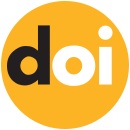**DOI System Overview and Functionality:**
– A DOI is a persistent identifier standardized by ISO for uniquely identifying academic, professional, and government information.
– DOIs aim to resolve to their target information object by binding them to metadata.
– DOIs are displayed in formats like ‘doi:10.1000/182’ or ‘https://doi.org/10.1000/182’ for easy access.
– The DOI system includes scholarly materials, research datasets, official publications, and audio/visual content.
– DOIs provide persistent identification, metadata association, and easy access to objects.
**DOI Implementation and Growth:**
– The International DOI Foundation (IDF) administers the DOI system.
– Over 85 million DOI names have been assigned by 9,500 organizations.
– Organizations meeting contractual obligations can assign DOIs.
– A federation of registration agencies implements the DOI system.
– Publishers are responsible for updating the DOI database to prevent dead links.
**DOI Standardization and Regulations:**
– The DOI system is an international standard developed by ISO and standardized under ANSI/NISO Z39.84.
– ISO/DIS 26324 was approved in 2010, and the final standard was published in April 2012.
– DOI is a registered URI under the info URI scheme.
– Compliance with standards ensures consistency and reliability in DOI assignment.
– ISO 15511 standardizes the International Standard Identifier for Libraries (ISIL).
**DOI Benefits and Usage:**
– DOIs enhance discoverability and visibility of scholarly content.
– They provide a persistent link for reliable access to digital content.
– Citation using DOIs ensures accurate referencing and attribution.
– DOIs support interoperability between systems and platforms.
– Using DOIs improves tracking and analysis of research impact.
**DOI Resolution and Maintenance:**
– DOI name resolution is provided through the Handle System.
– DOI names can be resolved using a DOI resolver like doi.org.
– DOI system ensures references do not become outdated or broken.
– Crossref and other agencies work on DOI display standards.
– DOI system continues to evolve and adapt to changing needs.
A digital object identifier (DOI) is a persistent identifier or handle used to uniquely identify various objects, standardized by the International Organization for Standardization (ISO). DOIs are an implementation of the Handle System; they also fit within the URI system (Uniform Resource Identifier). They are widely used to identify academic, professional, and government information, such as journal articles, research reports, data sets, and official publications.
 | |
| Full name | Digital object identifier |
|---|---|
| Acronym | DOI |
| Organisation | International DOI Foundation |
| Introduced | 2000 |
| Example | 10.1000/182 |
| Website | www |
A DOI aims to resolve to its target, the information object to which the DOI refers. This is achieved by binding the DOI to metadata about the object, such as a URL where the object is located. Thus, by being actionable and interoperable, a DOI differs from ISBNs or ISRCs which are identifiers only. The DOI system uses the indecs Content Model for representing metadata.
The DOI for a document remains fixed over the lifetime of the document, whereas its location and other metadata may change. Referring to an online document by its DOI should provide a more stable link than directly using its URL. But if its URL changes, the publisher must update the metadata for the DOI to maintain the link to the URL. It is the publisher's responsibility to update the DOI database. If they fail to do so, the DOI resolves to a dead link, leaving the DOI useless.
The developer and administrator of the DOI system is the International DOI Foundation (IDF), which introduced it in 2000. Organizations that meet the contractual obligations of the DOI system and are willing to pay to become a member of the system can assign DOIs. The DOI system is implemented through a federation of registration agencies coordinated by the IDF. By late April 2011 more than 50 million DOI names had been assigned by some 4,000 organizations, and by April 2013 this number had grown to 85 million DOI names assigned through 9,500 organizations.
